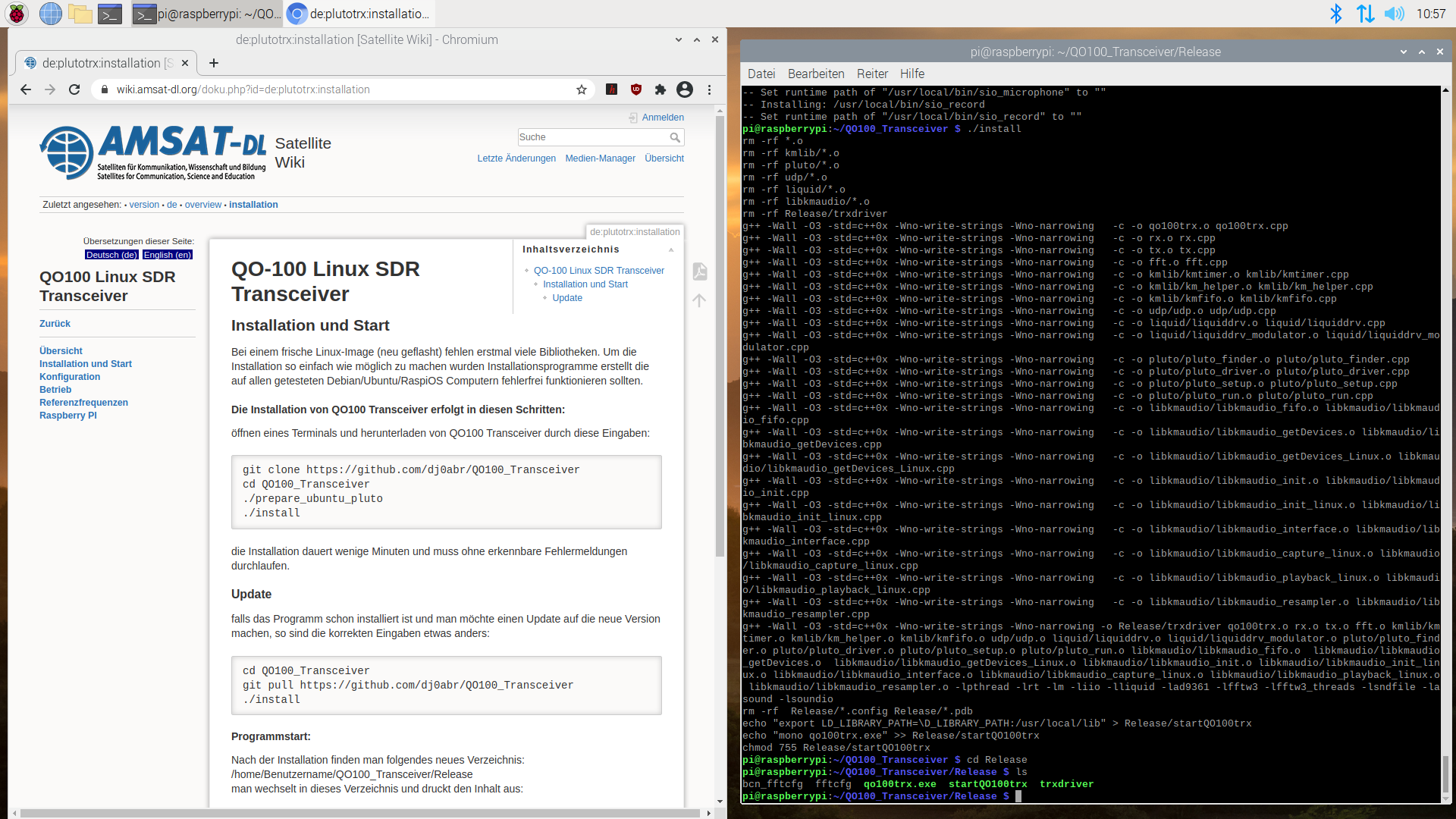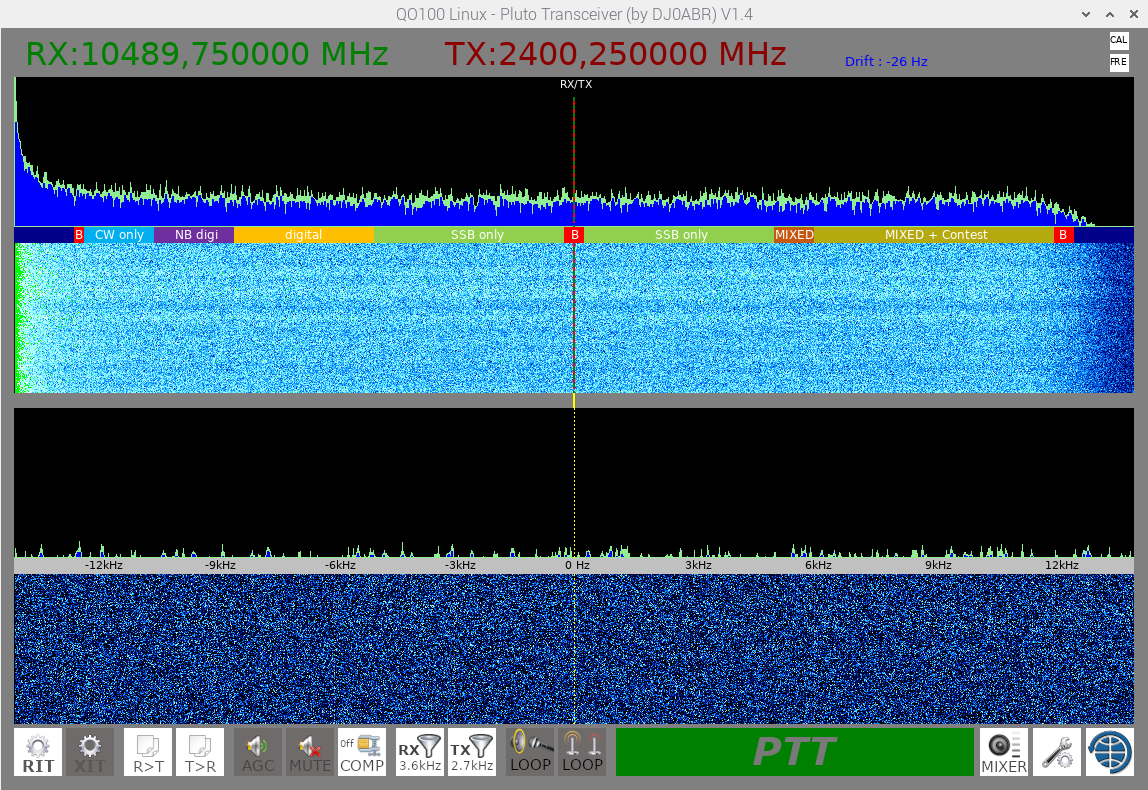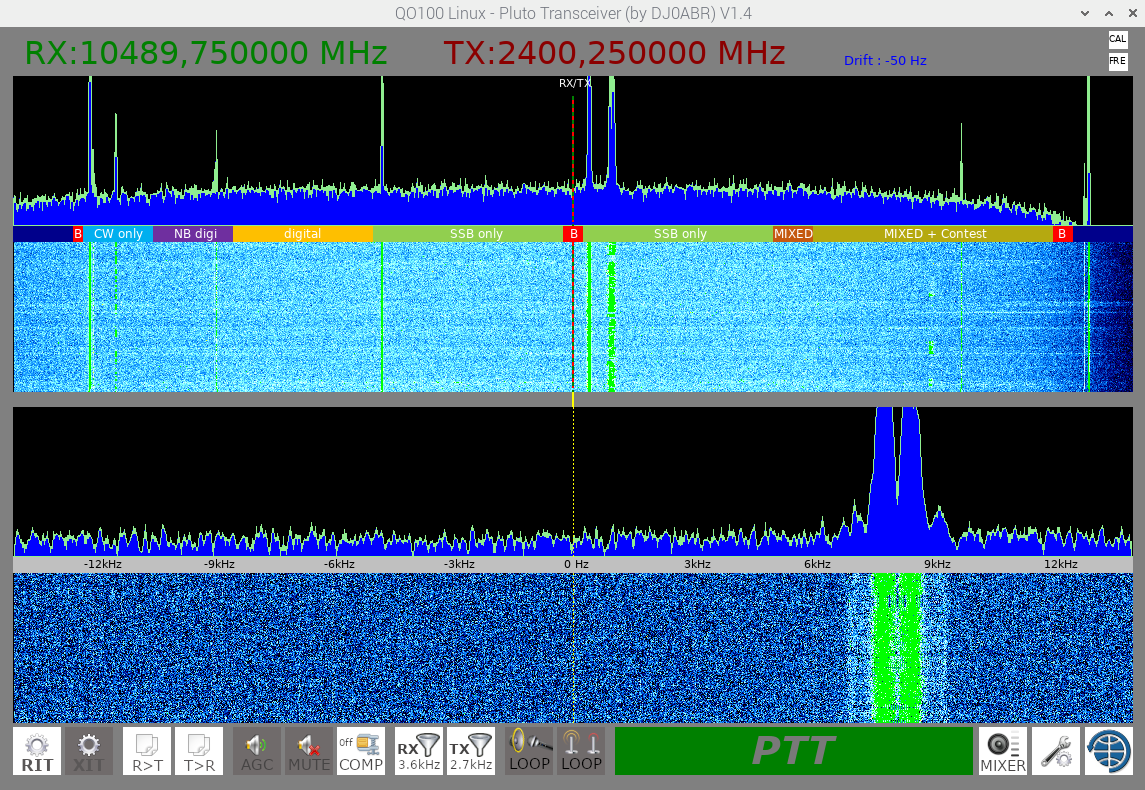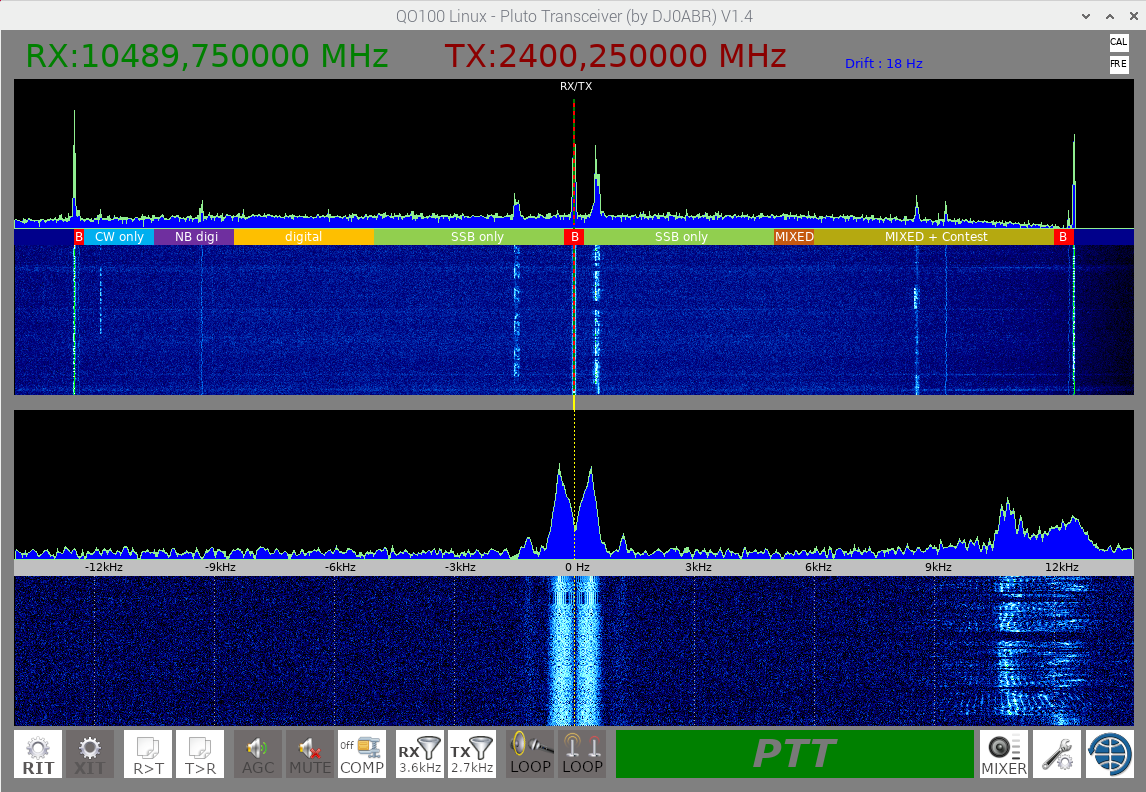User Tools
Sidebar
This is an old revision of the document!
Table of Contents
QO-100 Linux SDR Transceiver
Raspberry PI Info
- a Raspi-4 is recommended. The RPI 3B+ works since version 1.67 also quite well, but is of course a bit slower than the RPI4.
- Raspberry OS 32bit is used (the 64bit version was not tested).
- the Pluto can be connected via USB or alternatively via ETH/USB adapter, but the operation should then be done via Ethernet cable. The data rate is just under 20Mbit/s which is too fast for most wlans.
- tested Pluto versions: Rev.B, Rev.C with original software or with F5OEO software, as of 2019 or 2021.
Image
If you want to have a ready image for the SD card, you can get it here:
Version: V1.6
Raspberry QO100 Transceiver Image
Username: pi
Password: qo100trx
the SSH server is installed and activated. The image is not always up to date. After installing this image you may have to update QO100_Transceiver, see here: Installation and Update
Power supply
a very good and stable 5V supply is important. This does not only concern the power supply but also the USB cable. Here are very bad cables on the market. I cut the USB connector and solder a 1mm² cable to it. This is also the reason why I usually prefer the Odroid C4, it is powered by 12V which makes the power supply much easier.
Step by step installation
Here is the installation on a Raspberry PI 4, from the beginning.
Writing the Raspi OS image to SD card.
in this example was used:
2021-03-04-raspios-buster-armhf.img
first booting
- entering the country settings
- assigning the password
- wait until the update is finished …zzz or coffee, it takes some time….
- reboot
Entering these commands, as described in the chapter “Installation”:
git clone https://github.com/dj0abr/QO100_Transceiver cd QO100_Transceiver ./prepare_ubuntu_pluto ./prepare_raspi ./install
on the screen it now looks something like this (click to enlarge):
Plug in the Pluto.
Plug the Pluto with the included USB cable into the USB 2.0 port of the Raspi (black USB connector).
the following is VERY important, it may take a while until the Raspberry recognizes the Pluto. If this is not successful, the Pluto must be unplugged and plugged in again (hard reset).
Now you have to wait a little bit, then you check with this command if the Raspi has recognized the Pluto:
iio_info -s
The output looks something like this:
pi@raspberrypi:~ $ iio_info -s Library version: 0.21 (git tag: 0cbeeca) Compiled with backends: local xml ip usb Unable to create Local IIO context : No such file or directory (2) Available contexts: 0: 0456:b673 (Analog Devices Inc. PlutoSDR (ADALM-PLUTO)), serial=10447384b904000a1100280045e5da6f73 [usb:1.4.5]
especially the output of [usb:1.4.5] at the end of the line shows that the Pluto was detected correctly.
You should not start the transceiver software until the Pluto has been detected by the Raspberry.
Start the transceiver
by entering ./startQO100trx
the software starts by default with USB, so the Pluto will be recognized immediately.
The sound card is also immediately set correctly on the Raspberry PI.
The picture now looks like this:
In SETUP you still have to enter the receive and transmit frequency, click OK, and the spectrum of QO-100 is displayed immediately.
in the picture Pluto is free running (without GPS), so the spectrum is a bit shifted.
If you don't use GPS for Pluto, first do calibration 439, see here SETTING THE REFERENCE FREQUENCY.
After this adjustment the spectrum will be displayed correctly:





